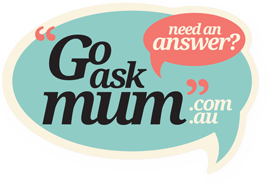Johnson & Johnson (J&J) have been hit with their third multi-million dollar verdict after a jury concluded the brand’s popular talcum powder is to blame for the victim’s ovarian cancer. The verdict was handed down last Thursday in St. Louis.
Deborah Giannecchini of Modesto, California, is the third victim to have claimed the talc had given her ovarian cancer after she was diagnosed with advanced stages of the disease in 2012. Giannecchini admitted she had used the powder to keep her genital area dry for 40 years. She blamed her ovarian cancer on J&J for the talc and sited negligence on their part.
It’s been a tough year financially for J&J after two other victims were awarded $72 million and $55 million respectively.
Yet a judge in J&J’s home state threw out two other cases as there wasn’t enough evidence produced to show talc causes ovarian cancer.
When it comes to diseases, ovarian cancer is relatively rare, yet more awareness is being made about it because the symptoms can be misdiagnosed and advanced stages of the disease are hard to overcome.
J&J are appealing the three losses as they believe their talc product is safe. Another trial is set to start January next year in St. Louis and there are an estimated 2000 similar lawsuit cases that could be tried.
Despite the rulings, experts have been asked to give the facts about talc and cancer. Research has proven talc doesn’t give ovarian cancer, yet juries disagree.
WHAT IS TALC?
Talc is a white powder, comprised of a mineral that is mined from around the world. It’s a soft mineral that can be crushed down to the white powder which is used in cosmetics and personal care products to absorb moisture. Johnson & Johnson launched their baby powder in 1894. It’s a product that has be used in other products including paint and plastics.
DOES IT CAUSE OVARIAN CANCER?
Researchers still don’t know what causes certain cancers, so the answer to the question is difficult. Research has shown that age, obesity, use of estrogen therapy after menopause, not having children and certain genetic mutations or a family history of the disease do increase the risk of getting ovarian cancer.
80% of ovarian cancer diagnoses are made to women over 50 and it accounts for 10.4 cases per 100,000 females. It’s the 9th most diagnosed cancer in women.
Due to the rarity of the disease compared to other cancers, it’s hard to say whether the use of talc does in fact cause ovarian cancer.
WHAT RESEARCH SAYS
The biggest studies found no link between talcum powder use around the genitals and ovarian cancer. But over 20 smaller studies, that have conducted their research over a 30 year span, have found a modest connection. Their findings conclude women increased their risk of ovarian cancer by between 20-40% if they used talc on their genitals.
But this doesn’t mean talc causes cancer. No proof has been shown that talc travels through the reproductive tract, enters the ovaries and triggers cancer. Talc also doesn’t interact with chemicals or cells which makes it highly unlikely that it causes cancer.
One large study in the US that followed 51,000 sisters of breast cancer patients, found those that used talc on their genitals reduced their risk of ovarian cancer by 27%. Another two big studies conducted by the Women’s Health Initiative and Nurses’ Health Study found no increased risk of ovarian cancer to talc users.
WHAT EXPERTS BELIEVE
Dr. Hal C. Lawrence III, vice president of the American College of Obstretics and Gynecology believes the bigger studies confirm there is not true link to talc use and ovarian cancer.
“Lord knows, with the amount of powder that’s been applied to babies’ bottoms, we would’ve seen something.”
Dr. Nicolas Wentzensen from the National Cancer Institute says there is no clear connection.
“It is very hard to establish causal relationships,” he said, adding, “A lot of ovarian cancers occur in women who have never used talc, and many women have used talc and not gotten ovarian cancer.”
Elizabeth Ward, the research director for the American Cancer Society says the discrepancy in studies is unusual so the risk is very small – if there is one.









